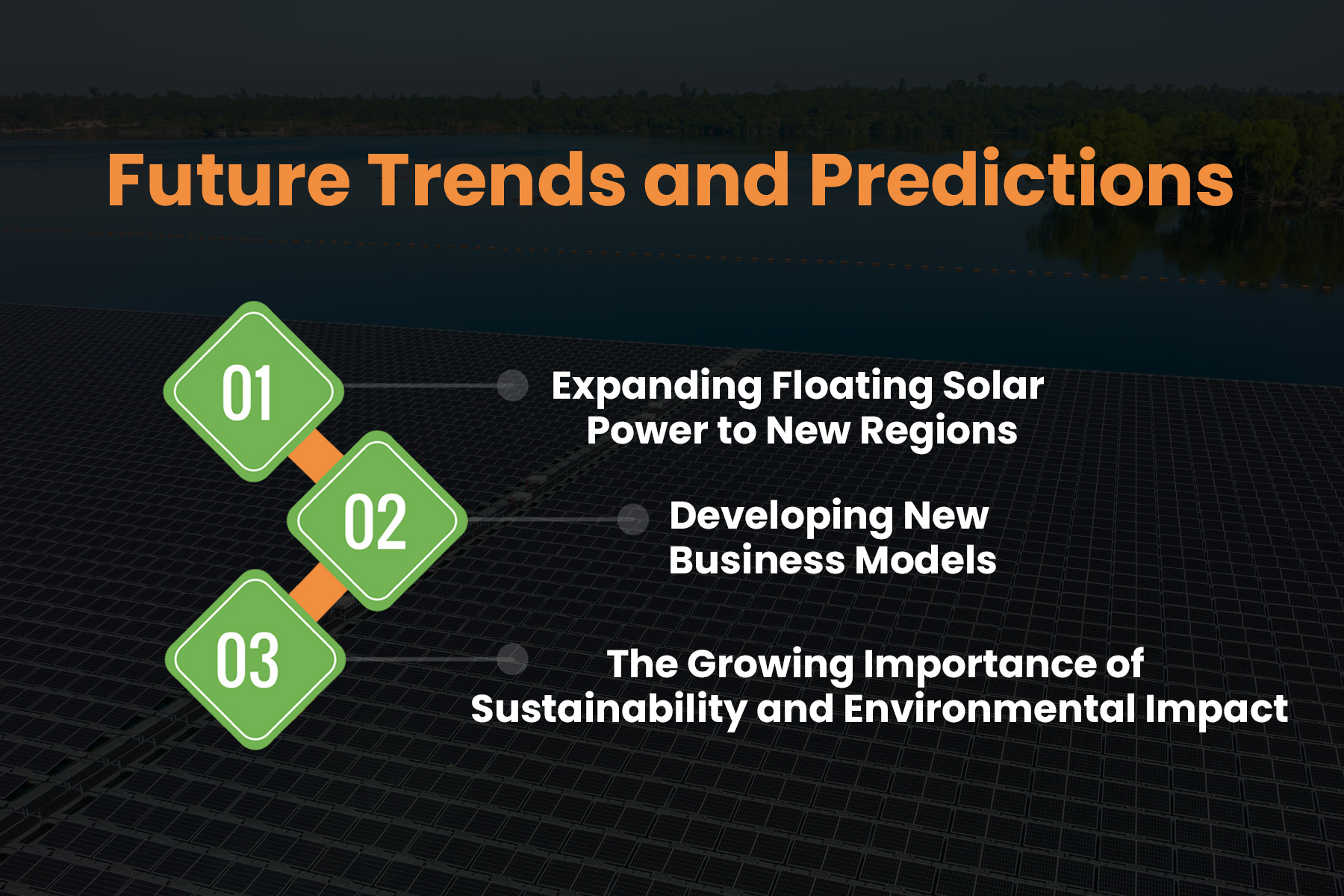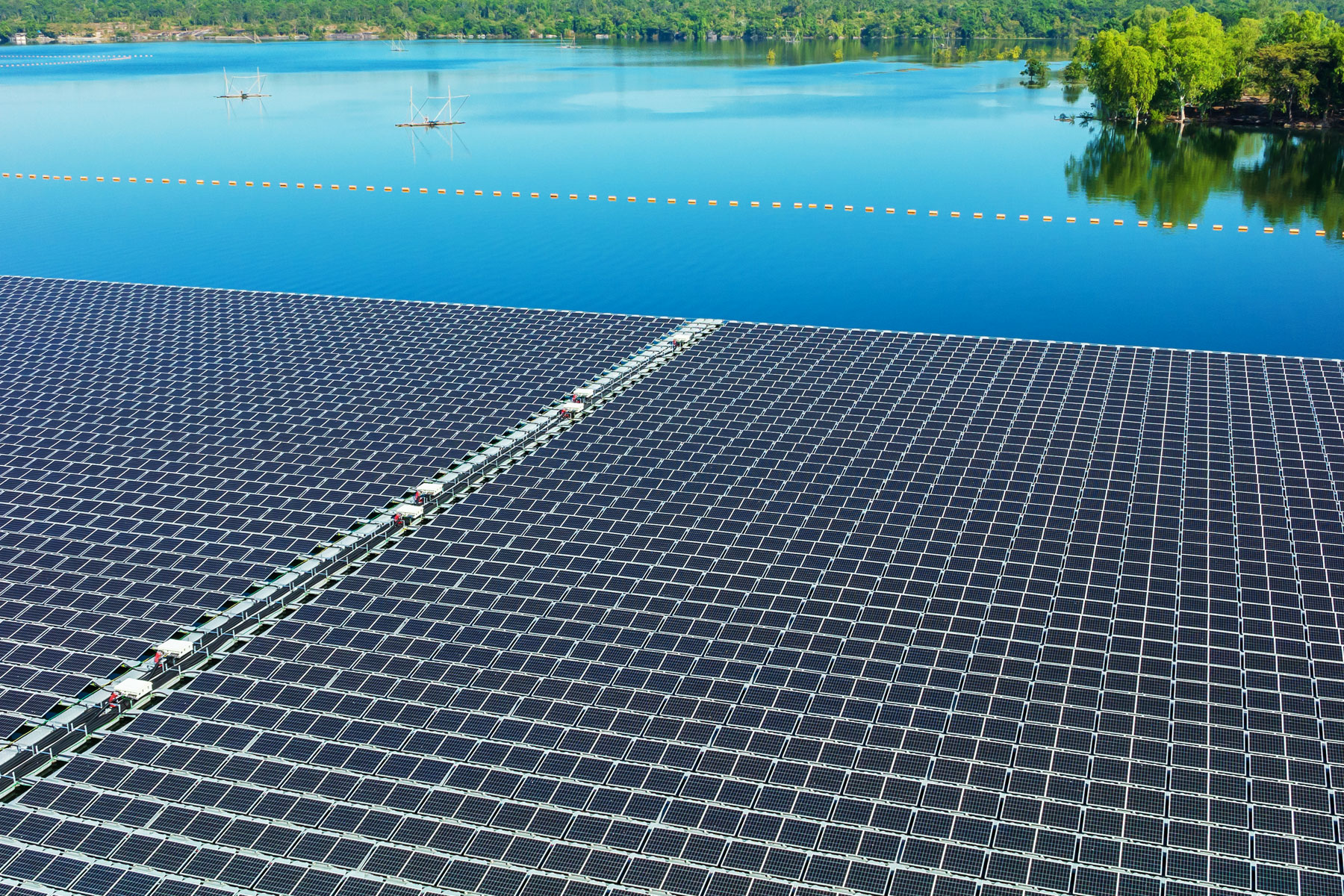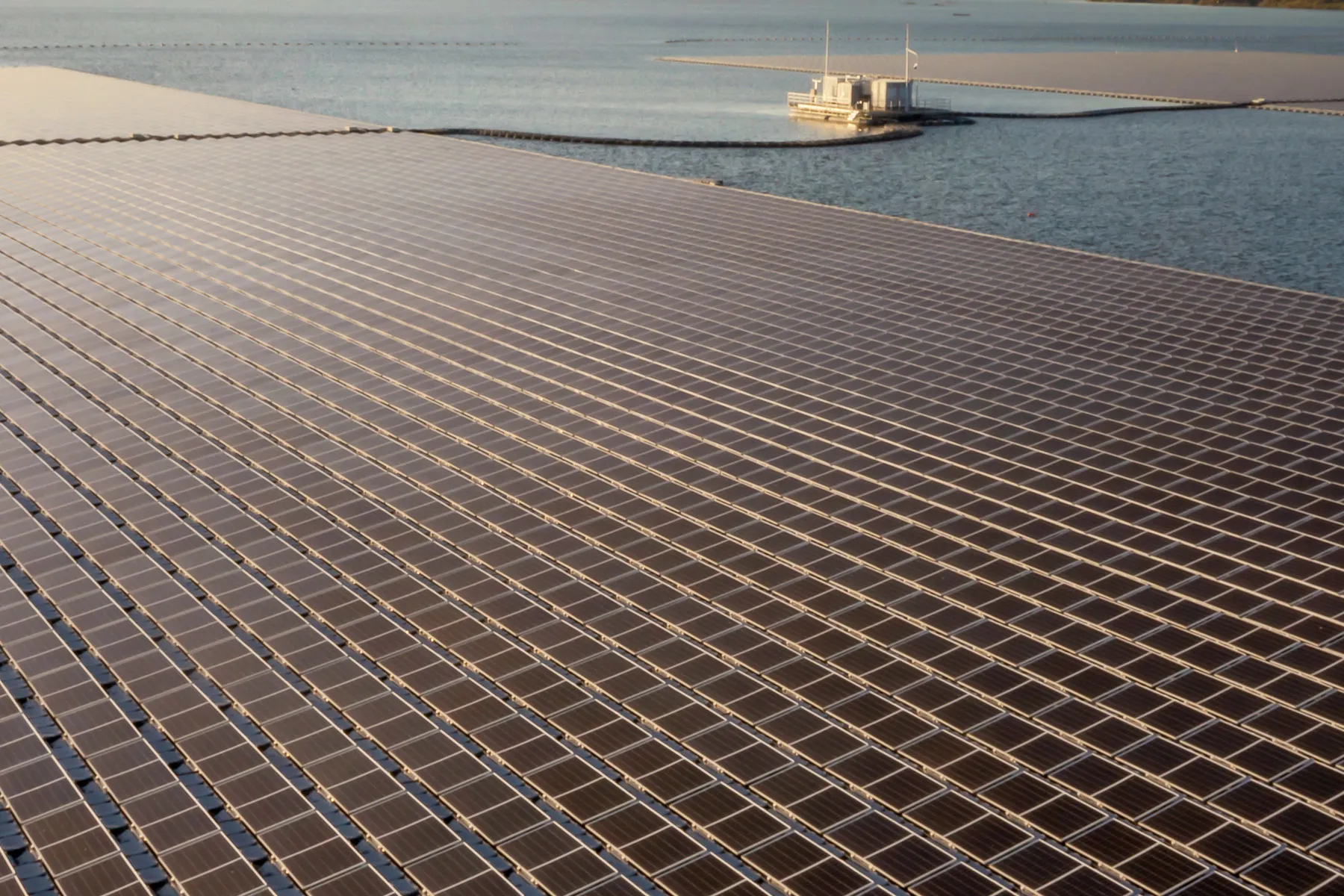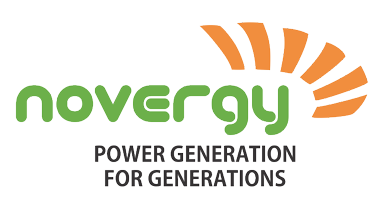We explore the fascinating world of floating solar power plants. As the demand for renewable energy grows, interest in solar energy technology has increased, and floating solar power plants have emerged as an innovative solution to land scarcity.
Floating solar power plants are mainly solar panels mounted on floating structures such as rafts, pontoons or barges, then placed in bodies of water such as lakes, reservoirs or even the sea. These floating structures are anchored to the bottom of the body of water, and the solar panels are tilted to collect as much sunlight as possible.
In this article, we provide a brief overview of the current state of floating solar energy technology, including its benefits, challenges, and potential applications. We also discuss some key factors to consider when designing and implementing a floating solar park, including environmental impact, maintenance and sustainability.
Future Trends and Predictions

Novergy is a leader in solar energy, Novergy is well-positioned to capitalise on the trends and forecasts shaping the industry. Areas that Novergy should focus on are listed below-
Expanding Floating Solar Power to New Regions:
While floating solar power projects have already been implemented in some regions of India, there is still significant potential for expansion. Novergy expects to see new projects being developed for new water bodies.
Developing New Business Models:
With the proliferation of renewable energy, new business models and financial structures are becoming mainstream. For example, municipal solar power projects, where multiple businesses share one solar power system, are becoming increasingly popular.
The Growing Importance of Sustainability and Environmental Impact:
As our solar businesses become more conscious of their environmental impact, the sustainability of renewable energy sources is becoming increasingly important. Novergy focuses on the technical aspects of our products and services and how they are produced and delivered. For example, we consider the materials used in our supply chain and products to minimise their environmental impact.
Challenges and Limitations of Floating Solar Power Plants
Cost:
One of the biggest challenges with floating solar power plants is cost. A floating solar power plant’s material and installation costs are significantly higher than a traditional one. In addition, maintenance and repair costs can also be higher due to the complexity of working on a floating platform. To meet this challenge, Novergy is constantly working to improve the efficiency and cost-effectiveness of its floating solar power plants through research and development.
Maintenance:
Floating solar power plants require regular maintenance to ensure optimal performance. A floating platform constantly exposed to the elements can be subject to wear, corrosion and damage. Maintenance personnel must be specially trained and equipped to work on a floating platform, which can increase system maintenance costs. Novergy offers comprehensive maintenance services to ensure the longevity and optimal performance of its floating solar power plants.
Environmental concerns:

Floating solar farms can have a significant impact on the local ecosystem. Floating platforms can block sunlight and disrupt water flow, affecting aquatic life and water quality. In addition, the materials used to build the floating platform can also have an environmental impact, mainly if they are not disposed of properly. To alleviate these concerns, Novergy works closely with local governments and environmental groups to ensure that its floating solar farms are built and operated in an environmentally friendly manner.
Site selection:

The location of a floating solar power plant can significantly affect its efficiency and effectiveness. Water depth, wave and wind conditions, and other marine activity can affect site selection. In addition, the availability of suitable land for installing a solar power plant can also influence the choice of location. Novergy conducts extensive site assessments to find the most convenient locations for its floating solar power plants and ensure they are as efficient as possible and have the lowest potential environmental impact.
Technical challenges:
Several technical challenges exist in designing and building a floating solar power plant. The floating platform must withstand the weight of solar panels and other equipment and the effects of wind and waves. In addition, the system’s electrical components must be carefully designed and installed to ensure optimal performance and safety. Novergy has a team of experienced engineers and technicians working on these technical challenges, ensuring that its floating solar power plants are safe, efficient and effective.
Final Thoughts
Sustainable energy source technology offers many advantages, such as efficient cultivation, less water evaporation, and lower maintenance costs. In addition, floating solar power plants can be used in various water bodies, from swimming pools to oceans, offering flexibility and scalability.
The article highlights the need for further research and investment in floating solar power plants to realize their full potential. With the continued development of technology and the focus on renewable energy sources, the future of floating solar energy looks promising.
As we move towards a cleaner and more sustainable future, we must continue to explore innovative solutions such as floating solar farms.
If you’re looking for a trusted solar partner, look no further than Novergy.
As Solar Experts’ top choice, we have been leading the way in solarizing industries and large corporations for over 16 years.
As an integrated solar player, Novergy offers a one-stop solution from planning to design and execution.
Novergy has been offering solutions for a diverse set of industries for many years and exporting to more than 30 countries.

